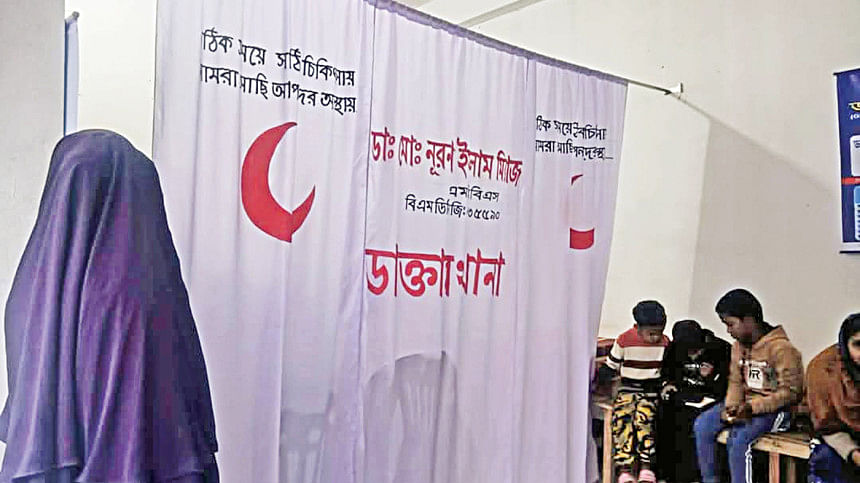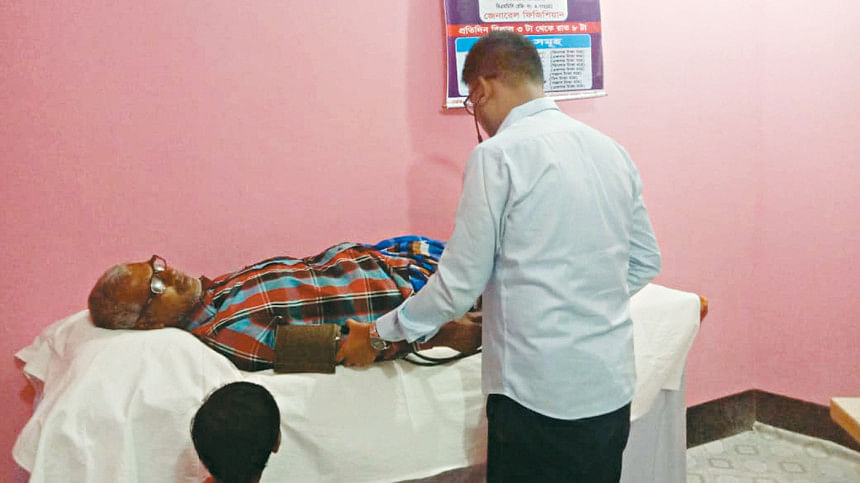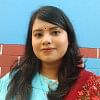The doctor next door

For 36-year-old homemaker Tania Akter, falling ill meant anxiety over costly treatment and unreliable healthcare.
Her husband, a salesman at a motorcycle showroom, earns just enough to get by. With little financial cushion, seeing a doctor for everyday health issues -- was a luxury she could rarely afford. But that changed a few years ago when Tania first visited Daktarkhana, a small general physician (GP) centre near her home in Dania, Jatrabari. Since then, it has become the family's first stop for any health concern.
"Whether it's fever, the flu, a minor injury, or managing my fatty liver -- I go straight there," she said. "The doctor knows me, listens properly, never rushes, and talks in a way that makes me feel I am heard."
Consultation fees are just Tk 300, and if she visits regularly, the doctor often waives the fee altogether.
"He also gives advice over the phone and refers to a specialist if needed."
Since its launch in Betgari, Rangpur in 2019, Daktarkhana has grown into a network of 197 centres, 13 in Dhaka and the rest across 30 districts, providing continuous, affordable care to over 1,500 patients every day.

More than 1,50,000 people have received treatment so far, delivered by 200 MBBS-qualified doctors. In metropolitan areas, consultations cost Tk 300, while in district and upazila centres, it's Tk 200.
While GP systems have long underpinned healthcare in countries like the UK, US and across Western Europe, Bangladesh lacked a formal model. That is, until a group of young doctors led by medicine specialist Dr Ratindra Nath Mondal decided to act.
"In developed countries, people first see their GP, who handles most issues," said Dr Mondal, founder of Daktarkhana and president of the Bangladesh Society of General Physicians. "They only go to specialists when referred, and always return to their GP for follow-up. This is called the 'structured referral' model."
According to Mondal, around 80–85 percent of illnesses can be effectively treated at the GP level. "When more complex care is needed, our doctors refer patients to our specialist panel," he said. "It cuts unnecessary costs, reduces suffering, and allows our overburdened hospitals to focus on critical cases."
The Daktarkhana model also supports young medical graduates, addressing a major gap in the system. Each year, many MBBS doctors struggle to find meaningful work, with no formal pathway into general practice.
To bridge this, Daktarkhana offers newly qualified doctors a four-day General Practice Orientation Course (GPOC), developed by the Bangladesh Society of General Physicians. So far, over 10,500 doctors have completed the training.
"Each of our centres is run by MBBS doctors trained to diagnose and manage common illnesses, offer counselling, and refer when necessary," said Mondal. "They spend at least 15 minutes with each patient. Listening itself is a form of treatment."
During the pandemic, when many health services shut down, Daktarkhana clinics provided free telemedicine consultations, including late-night support for pregnant women, children, and chronically ill patients.
"Our long-term goal is to establish one GP centre for every 6,000 families," Mondal said. "Once that's in place, primary healthcare will truly be within reach and we'll be far closer to meeting our SDG targets."
The government has recently announced plans to launch over 100 GP clinics in Dhaka. However, Dr Mondal stressed that nationwide reform is essential.
"The day we have one GP centre for every 20,000 people, we'll have a working healthcare system," he said. "With proper support from the government, this model can serve as a blueprint for the entire country."
Crucially, he said, the government doesn't need to start from scratch.
"Bangladesh already has a vast network and infrastructure -- community clinics, union sub-centres, upazila complexes, district hospitals, and medical colleges. Our Daktarkhana model can be integrated into this system at minimal cost."

 For all latest news, follow The Daily Star's Google News channel.
For all latest news, follow The Daily Star's Google News channel. 



Comments